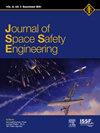宇航员核安全:在使用太空核动力系统时管理机组人员风险的概念
IF 1.7
Q3 ENGINEERING, AEROSPACE
引用次数: 0
摘要
空间核动力系统可以为人类对月球、火星和更远的空间探索任务提供变革性的能力。放射性同位素电力系统可以为月球夜间生存提供热量,并为分布式着陆器和月球车的长时间运行提供电力,以支持宇航员的活动。裂变反应堆可以为载人地面基地提供动力,或者以最小的速度提供行星际推进。然而,广泛使用空间核动力系统直接支持宇航员的行动,需要协调一致地全面关注对机组人员安全的影响。安全风险和管理方法可能在任务生命周期中有所不同,例如在发射、运输或地面操作期间。没有一种全面的方法能够抓住船员安全和核技术之间的关系。现有的核和空间安全实践通常由美国宇航局和空间核技术开发人员分开处理,详细的方法和标准有限。其他空间机构、私营部门和商业监管机构正在首次开发空间核系统,但缺乏跨领域的分析方法。本文通过评估核系统如何影响机组人员安全来解决这一差距,将广泛关注的问题纳入“宇航员核安全”的新概念。本文提供了一个概念来理解和管理这些广泛的关注,来源于生命周期任务安全框架的应用。它确定了宇航员与空间核系统相互作用的五种原型情景,并描述了机组人员风险的四个方面:名义操作期间的辐射剂量、非名义操作期间的辐射暴露、极端高温等非核危害,以及来自整体系统可靠性的机组人员安全。本文章由计算机程序翻译,如有差异,请以英文原文为准。
Astronaut nuclear safety: A concept for managing crew risks when using space nuclear power systems
Space nuclear power systems can provide transformational, enabling capabilities for human space exploration missions to the Moon, Mars, and beyond. Radioisotope power systems can provide heat for lunar night survival and electricity for long-duration operations of distributed landers and rovers to support crewed activities. Fission reactors can power crewed surface bases or provide interplanetary propulsion with speeds that minimize travel time. However, widespread use of space nuclear power systems in direct support of astronaut operations calls for a concerted and holistic focus on the impacts on crew safety. Safety risks and management approaches may vary across a mission lifecycle, such as during launch, transport, or surface operations. There is no holistic approach that captures the nexus of crew safety and nuclear technologies. Existing nuclear and space safety practices are often handled separately by NASA and space nuclear technology developers, and detailed methods and standards are limited. Other space agencies, the private sector, and commercial regulators are developing space nuclear systems for the first time, yet lack cross-cutting analytical approaches. This paper addresses this gap by evaluating how nuclear systems impact crew safety, encapsulating wide-ranging concerns into the new concept of “astronaut nuclear safety.” The paper contributes a concept to understand and manage these broad concerns, derived from an application of the Lifecycle Mission Safety Framework. It identifies five archetype scenarios of astronauts interacting with space nuclear systems and characterizes four areas of crew risk: radiation dose during nominal operations, radiation exposure during off-nominal operations, non-nuclear hazards such as extreme thermal temperatures, and crew safety from overall system reliability.
求助全文
通过发布文献求助,成功后即可免费获取论文全文。
去求助
来源期刊

Journal of Space Safety Engineering
Engineering-Safety, Risk, Reliability and Quality
CiteScore
2.50
自引率
0.00%
发文量
80
 求助内容:
求助内容: 应助结果提醒方式:
应助结果提醒方式:


